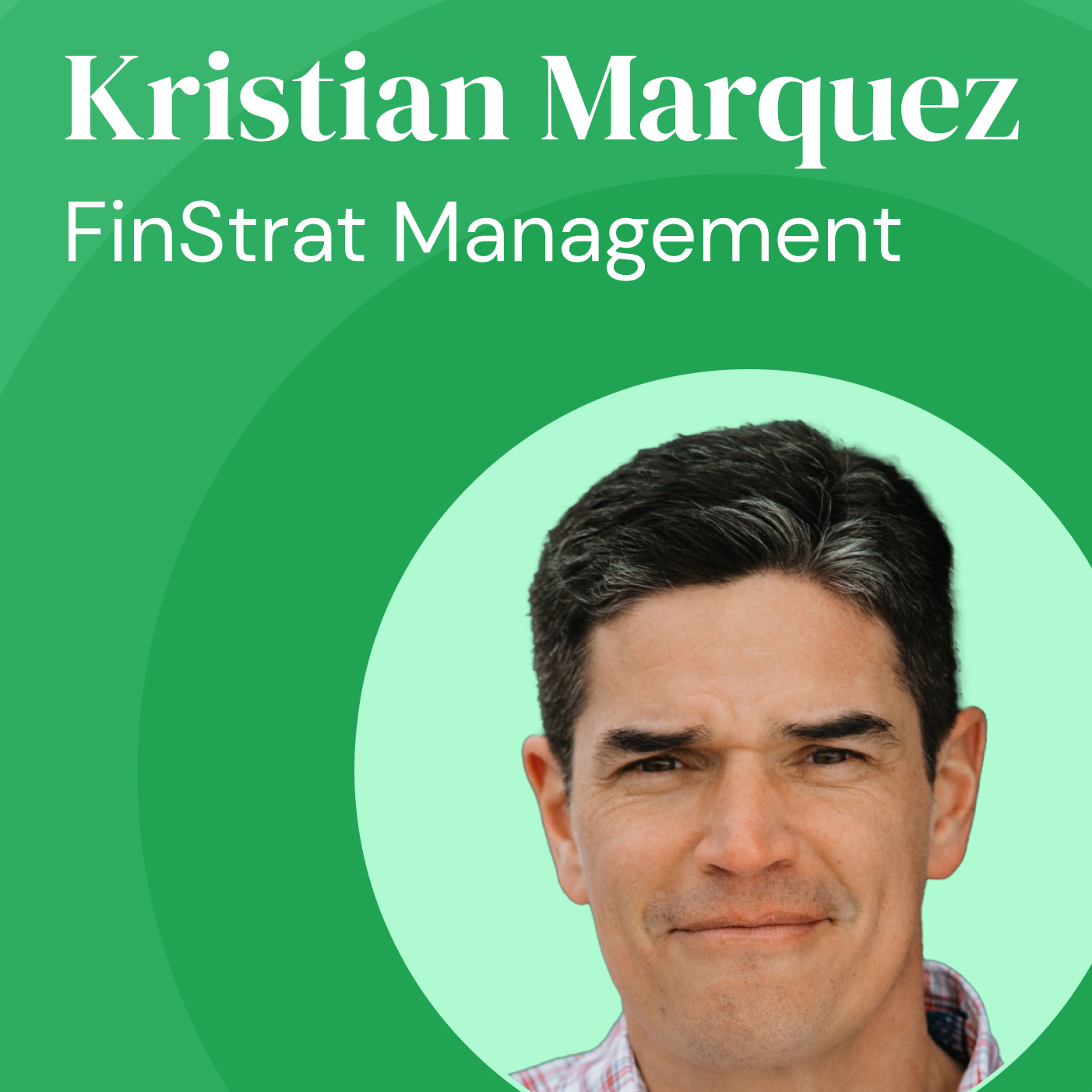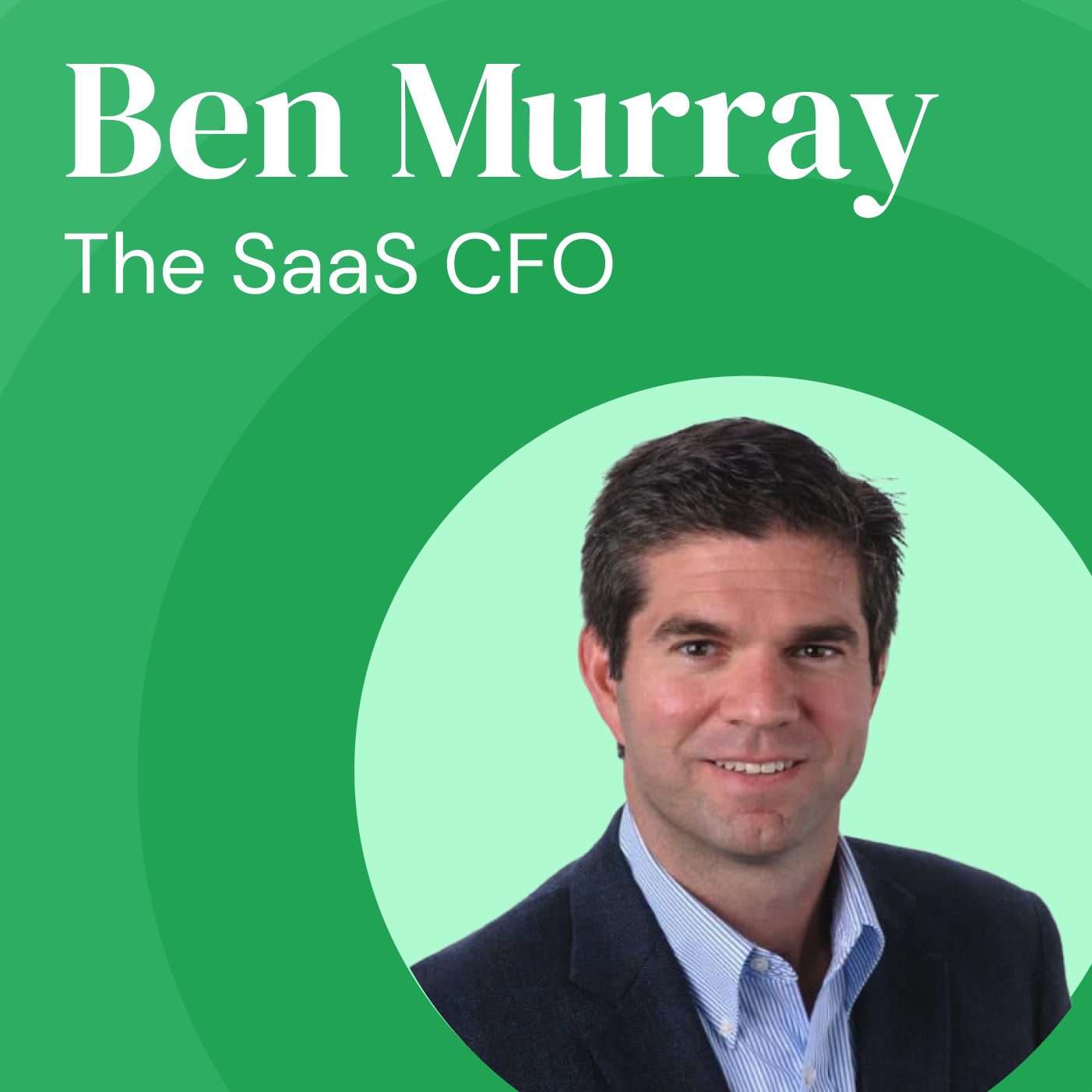Measuring the Office of the CFO | FP&A Fridays
- 0.5
- 1
- 1.25
- 1.5
- 1.75
- 2
Rowan Tonkin: Hi. I'm your host, Rowan Tonkin and welcome to Being Planful, the show for FP& A leaders and planning experts. Hi, everyone. Welcome to FP& A Fridays. We're back, post- Planful Perform. Once again, as always, joined by Glenn Snyder and Chris Ortega. Welcome back, gents.
Chris Ortega: What up?
Rowan Tonkin: Well, really excited about this topic because it's one near and dear to my heart. Everyone always says," How do you measure marketing?" And I always say," Well, it depends." Let me throw this challenge back to the office of finance. I think there's some obvious answers here and we'll get to those. But Chris, Glenn, what I wanted to talk about today was how do we measure the office of the CFO? And specifically the FP& A, finance and accounting teams. Obviously there's corp dev and tax and treasury and all these other departments that we can talk about but let's talk about finance and accounting. Glenn, what are your perspectives on measuring those two functions?
Glenn Synder: Well, I think first, you have to separate it into kind of the core standard functions that's a little more quantifiable and then you get the, here's the impact you're making on the business, which is much more qualitative. On the core stuff, that's going to be accuracy, it's going to be timeliness. It's going to be transparency and understanding of the data when someone has a question, a CFO has a question about the numbers, can you answer? Those are the things that you can go over and clearly measure. But then you have the impact to the business. That's about building out better relationships, working with the partners that you have, that Chris and I have talked about for months, about those key business partners and helping them achieve their goals. Some of that measurement is just going to the chief operating officer or the head of sales or the head of legal and say," Hey, has your finance team, have they been helpful to you? Do you get from them what you needed?" Those types of things. It is much more of a qualitative analysis but it's how did you help the company achieve its broader strategic goals? And what kind of impact did finance has in there? Sometimes it could be cost savings to help hit a numerical goals like profitability sometimes or even growth but sometimes it's about efficiency gains or just making better decisions because you're adding transparency to a process that didn't exist before.
Rowan Tonkin: Yeah. I really like that, the impact and the ability to then almost provide a 360 degree view. Go and ask the business partners. If you're in finance, say," How are we doing? Give me a one to five. Tell me, am I a four? Or am I a three? Or am I a five? Where are we in this process?" And you'll get really candid feedback but you'll learn where functions are broken. Chris, how have you measured your teams before? Or how have you been measuring?
Chris Ortega: Yeah, I think a lot of what Glenn said, it's really difficult when you look at we're the people that support the business. A lot of, in our tactical operations, you can get more quantitative in your assessment and your smart goals that you have for your team but particularly on the finance FP& A side, it gets more qualitative. To me, I think you brought up a great point, Rowan, when you talk about that value proposition. What is the value that I bring? Finance is so much indirectly, directly involved in other businesses. If you look at the partnership between sales, yes, we have accountability to make sure contracts are good, we have accuracy on the contracts, they're fully documented, fully signed off and everything but we support indirectly so many aspects of the business in terms of their smart goal setting. For the FP& A side, I always look at it to say," How are we in our high performance and our partnerships that we're providing to the organization?" Are you delivering on our commitments that we set to the business? I think that's a really good KPI to look at is saying," Hey, for the commitments and the projects and key results that we wanted to drive in the business, were be helpful in partnering and serving that group?" If you look at sales and they're like," Hey, we want to make sure our win rate goes from 20 to 25%," which is you can get specific. We want win rate to go up 20 to 25% in Q3, that's a smart goal that sales set. How can FP& A work towards it indirectly so it's supporting the analysis. How are you looking at that weekly? Do we have the lead volume? A lot of what we have in the business as our value metrics are indirectly coming from other people but we also have a seat at the table to set that smart goal setting directly with those other business partners that we support. That's usually how I measure the success of a high performance in partnership, accounting, finance and finance organization.
Rowan Tonkin: Yeah. And I think coming from the business side of the house, the goals for me of my FP& A team are to make sure I land the plane on the little narrow strip that I'm given, whilst achieving the goals that are required. Whether that's a top line growth or whether that's bottom line expense. If my finance team can help me course correct throughout the year as things change. We all know what's happened over the last 24 months, as those things have changed, I need my finance team to tell me how to course correct and help me make those very frequent decisions in order to maintain the growth rate, the ambitions and the key indicators that the company requires. Whether that's cashflow, whether that's particular growth rates, whether that's a OpEx versus revenue, whatever that may be. I need finance to tell me all of that information because if I don't have it, I'm flying blind and I'm likely going to miss my targets by a lot and that's going to look bad on my finance organization. Glenn, we talked in a little bit in the pre- show about the three core functions of being accurate, timely and providing insights to the business. Talk to me about how you would measure accuracy.
Glenn Synder: Well, it's pretty simple. The numbers got to be right. I've worked for public companies and I have seen what happens when the company puts out their earnings release and the numbers had errors in it. It is not a good situation. When you're a public company, those numbers have to be vetted eight different ways before they go out. And if there's errors in that, people start losing their jobs. It is that serious. Now, if you're a private company and you had an error in your quarterly results that you just went up to your owners, whether you're owned by a venture capital firm or a PE firm or just an individual person, you can kind of dance around that a little bit. You can explain it. But when it goes out to the public, that is a whole different story. I actually had somebody explain it to me this way. When you make a mistake as a CFO, the board will say," Okay, that's a mistake. We're going to watch everything you do much more closely. You make a second mistake, you're fired." That is how critical it is when you're a public company. Accuracy can easily be measured by just the number of mistakes. Now, when you talk about internally, when I'm going through and I'm reading the reports and the analysis that my team is putting out, I'm going through and I'm vetting their data before it goes to a business partner to make sure it's accurate. Did I pick up the mistake? Make sure we don't have any typos, spelling errors, punctuation, stuff like that. You always want to put your best foot forward. It's okay to make mistakes. We're all human and analysis is not something that can be automated. There is that human factor that comes into play. The big question, when I started measuring people on accuracy, do you repeat the same mistake over and over again? Because if you do, that's a problem. But if you can recognize that, oh, you know what? Oh, I know what I did wrong there. And then you fix it and you don't repeat that mistake, I don't really hold that against you. There's internal value of accuracy and there's sort of external value of accuracy.
Rowan Tonkin: Yeah. Another area that we've talked about before is in the area kind of working with your HR business partners and workforce planning. If you can minimize that wash rate by being really in tune with your HR organization and the business team, then you can maximize the output of the company. And so we all know there's going to be that, they can see rate on wash rate we've called it. If you can minimize that by staying super close and let's say in sales, for example, having quota on the street is really, really important. And so if you can stay super close to the sales leadership and the sales organization and ensure that you've got the maximum quota capacity on the street as often as possible, then that's an area where FP& A adds a tremendous amount of value to the business just by being really close with the hiring managers, HR and finance and being really close with the numbers. Hey, actually we know something's going to happen or something's going to change, let's start the hiring process six weeks earlier than normal so that we've got more rev quota on the street. There are different areas that we can look at. When we talk about timeliness, obviously one area we can measure accounting is the speed of close. Chris, talk about A, measuring the speed of close but then measuring, in our last episode we talked about the relationship between finance and accounting, and then talk about how that speed of close helps you be more timely in your FP& A role.
Chris Ortega: Yeah. This is a great, great point. And I can give you an examples. There's been organizations, privates, high growth entrepreneurial technology companies that I worked for and there's been times where we closed the books two weeks after the month is over. And if you look at that from a timeliness perspective, I always look at it, core FP& A finance organizations answer three business questions. What do we say we're going to do? What do we do? And what are we going to do about it? Every cycle, you have your fancy tools like Planful and other things that you work with to make it sexy and fun but really you're answering those three questions and really where you want to spend your time, energy and effort is what are we going to do about what we said we're going to do? And what did we do? And when you have a two week cull cycle, you're already closing the books to get right into another close cycle. That time, energy and effort that you're spending on saying what we're going to do about it. We said we're going to do eight widgets. We did four widgets and you're not spending any time about how does this inform the business going forward? Really you want to accelerate that as much as possible, get that under at best case. High performance teams, they get that day. I've seen teams where they closed at day one. Now that's a stretch goal when you're a publicly traded billion dollar multi- entity organization and you got 30 billion in revenue. You're a large organization, that's difficult but you want to accelerate that as much as possible because you want to spend, if you got that two week period and call it 10 business days, you want to have three to four business days tactically closing the books. You want to have those other six business days focused on what are we going to do about it in the business? How does forecast? What's our rolling plan? How are we tying in our cashflow? How are we tying in our people planning processes? You definitely want to have that as quick as possible because you want to spend your time, energy and effort on what did we say we're going to do about it? How does this inform us in the future where we're going? And you want to be precise in that. And I think that timeliness builds on that level of precision that you need. FP& A teams need to be precise I would say, in the quarterly kind of mindset. Now, if you're a publicly traded company and don't have a lot of variability in your business, you can have more precision six, 12, 18 months out but you definitely want to be precise. And you want to take the time, energy and effort in your closing process to balance out, to say," Here's how much time I'm spending 30, 40% of my two weeks after the month is closed to be focused on tactical operations." What did we say we're going to do? And what did we do? I want six days, 60%, 70% focused on what are we going to do about it? I think that is the optimum balance that you want post closing a month.
Rowan Tonkin: Yeah. And I think the measure there that you talked about for me is forecast accuracy. Whether that's a budget forecast, a revenue forecast, a cashflow forecast, ensuring that forecast accuracy is there in quarter if you're in a fast growing company is really important. If you're in a larger, more steady state business, as you said, you can look further out. How have you measured that forecast accuracy historically? And what's important about measuring that from your perspective, Glenn?
Glenn Synder: To me, it's about how useful is the data you're putting out there? Everybody, every FP& A group is going to be doing a budget variance report or a forecast variance report on a monthly basis. I have been there where I've sat down with business partners and the budget was so far off because of things that came up, they're like, why are we even talking about this? It's a waste of time. And so you have to go over and make sure that your accuracy and your forecast or your budget is really about how meaningful is this as a tool? Now, many people go and tell, you can't predict the future. And if I could predict the future, I'd make a lot more money in the stock market. Yes, okay fine. That's true. However, it's about making sure that you understand the key drivers of the business and what's going on. If you're having a conversation with somebody about a budget variant and you're talking about the difference between the revenues and the revenue forecast or the expense and the expense forecast, you're having the wrong conversation. You need to talk about the underlying business drivers that drove those numbers to where they are because that's where the assumptions really are. And Rowan, you talked before about those key metrics and making sure that whether it's a sales quota or you're talking about head count with HR, whatever it is, understanding those drivers and those metrics is really what's going to drive those variances. To me, it's really about making sure that you're having a meaningful conversation with the business and you're not wasting their time just to say," Well, we have to have this discussion so we're going to have it," even though the numbers don't really matter to anybody anymore, that's just a waste of time for everybody. Instead, what you should be doing is talking about what's the underlying driver? What was the original assumption that went into the forecast of the budget? Why is it different now? And what had changed to make sure that the next time you go to a forecast, you become that much more accurate.
Rowan Tonkin: And then starting to measure that. Was it a mistake? Because if it was a mistake, then you want to capture that, you want to track that and per your conversation earlier, we don't want to make that same mistake again. We need to start capturing that insight, was it just information that we were missing because the market dynamic changed or something else changed? Well, how often does that happen? Because if you're not capturing those insights anywhere and you're just keeping it as tribal knowledge, then it's really hard to disseminate that quarter over quarter, year over year and really see how frequently your business changes and business is changing faster than ever right now. And things like that really hurt organizations when they make those sort of, and they're maybe not mistakes, but they're not fast enough to see those things happening and be able to course correct against them.
Glenn Synder: Right. Rowan, just if I could add one thing to that. You're absolutely right. And the thing is, is that the FP& A group should be improving the forecast and budget process every single time they're doing a forecast or a budget. If you are not making improvement, you are not going to be putting together a good forecast or budget. You have to always look at where did we miss before? Why did we miss it? How do we fix that? And you're never going to be right. I've been doing this a long time, I have never hit to the dollar a forecast, but I've improved it to the point where I'm typically within one to 2%, which is a reasonable variance. That's the whole thing is, but you've just you got to keep on improving because if you're sitting there and you're off by 10, 15% in your forecast, you're not really putting a meaningful number up.
Rowan Tonkin: Yeah, it's all about acceptable materiality. Depending on the organization, you're out 0. 5% might be a problem. But if you're at a super fast growing organization or an organization that has wild swings in their business, then one quarter, 10% may be okay, depending on the business. I probably wouldn't want to be in the 10% organization, that would cause me a little heartache, even on the business side. But it may be acceptable to some organizations. We talk a lot about this on FP& A Fridays, which is it always does depend on the stage and the maturity and the type of business that you're in as to how you set these measures. There's never going to be a one size fits all model. The most important part is that you are doing the measurement itself and working with your teams to provide that impact. Chris, let's talk a little bit about the relationship side. The more qualitative. How do you go out and seek feedback from your business partners as to how you and your team are doing? And how do you then use that to turn things around or improve upon your processes?
Chris Ortega: Yeah. I think the same. I always take this approach from a sales mindset. It's the same thing that you do in a sales process. You look over your quarter, you look at how did we win? You look at, where we lost at. You kind of do a deep dive, at least in SaaS businesses and high growth business I work with, that's one place we always just all get together and we say, what went right? What went wrong? What we could have done better. Marketing is the same way. You kind of go through that. I look at that same way in the finance lens of just going to your business partners and saying," Hey, what really went well?" And on a quarterly basis. As we do with our customers where we hold quarterly QBRs with them to see how they're tracking in our tool and technology, the value that they're getting, what pain points that they're having, the resources they may need, the knowledge that they may know with the product, you can take that same framework to your business partners that you have. One thing I do with my teams is we do quarterly QBRs and we don't do it with every single business partner but we find the ones that, hey, things are going well in sales. Let's find a really area that things went really well and deep dive in there how we can get better, how we can improve or what made it go successful. Let's identify another business partner that may be on the client success side that we didn't hit our project's completed target that we set out or we didn't get the NPS score that we were looking to get. How can we go work with them? It's really being strategic in saying," Hey." Unless you have a super 20 people FP& A team, you probably can't go to each business partner but taking those almost individual QBRs after the results that have been driven to say," How could we get better? What are some things we did well? What are some knowledge gaps that we have inside the partnership? What are we seeing in the overall market?" And doing those individual QBRs. And then communicating and cascading that to the overall team. That way everybody understands is like, okay, we hit a 135% of our sales target this quarter. How did we do that? Where did we win at? Was it solutions consultant that was knocking it out the park? Was it demand generation pipeline that was super successful? Was it just the overall market? Did we look historically and see that seasonality for us in Q3 is where the primary buying cycles are? It's taking that same approach that we do in the business and doing that with the finance partners that we support. Because typically a lot of business partners, the only time they get around talking to have these kind of quarterly QBRs and business review and partner reviews is during the budget cycle, they don't hear from finance and then it's the budget and they're like," Oh, finance is knocking on my door." And I think that also goes into strengthening the partnership and the trust that you have in the organization. For me, coming outside of Q3, I'm already thinking through of all right, once we solidify on our numbers, who are going to be the business partners that we want to kind of go through and do that QBR, that deep dive in terms of how we work together, what went well, where can we improve? Where's the knowledge gaps on both sides? And how we can be better effective business partners. That's usually the approach that I take around the business partnership side. You're muted, Rowan.
Rowan Tonkin: As usual, we can never escape that. One thing that I would just playing off that, if I was a CFO and I wanted to measure my finance team, one thing I'd try and measure is friction. I'd send it out to the department heads and say," On a scale of one to five, know how much friction is there in our processes together?" And I'd want to slowly eliminate that because that's where it starts to create all that misalignment is if things are frictional with finance, you're in that scorekeeper mentality that we've talked about a lot of times before but also that speed of insight is probably also creating some friction. I'm not getting what I want or whenever I see a model from my FP& A team, it doesn't quite match the way that I run my business. And so that creates more friction. Therefore, we have to go through two or three more passes of that specific model and that takes time. And I don't like taking time because we're trying to move things fast. Glenn, have you ever thought about that aspect of measuring the team? Or have you thought of other ways of doing that?
Glenn Synder: Yeah. It actually, it comes down to a word that we use quite a bit here, which is trust because I would look at it as friction is not a bad thing because I've been in situations where I've had to have difficult conversations with my business partners. Hey, I know you want to go over and expand and add those 15 people to your group. We don't have the funds to do it so now let's go back and revisit what we can do and how we can help you get to where you need to be without spending that kind of money. And you have to put up resistance. And I always look at it as FP& A, you have to have one foot grounded in here's what the CFO is saying, that financial results need to be. Here you got to drive those numbers home and you have to have the other foot in the business side saying," Here are the strategic goals and what they're trying to achieve." And you have to stand in both places. And so sometimes that friction is a good thing but what it's most important is having that trust. And that to me because if you are a business leader, so Rowan, you're the chief marketing officer. If you have a great relationship with your finance partner, they might put up resistance and put some friction out there and challenge you on things. And that's a good thing. And you're going to say," Hey, you're thinking, you're telling me about things I'm not thinking about," we're going to land in a better place. It's a whole different thing than saying," You know what? You're just doing stuff that I don't even care about. You're not listening to me," and that's not where you want to be. Really what it comes down to, that relationship of trust and getting to that thought partner stage where you say as that business leader," I want my finance person with me when I'm making decisions because I value their insight." That's the ultimate place we want to get to. That's really how to measure people. If you have people where they say," You know what? I'm going to do my own thing. I know finance seems to not have any idea what the hell is going on. And so I don't care." That is a very clear way of measuring that relationship too and you know that that's one that has to improve.
Rowan Tonkin: Yeah. I guess the insight, having a difficult discussion about a specific number, or hey, I really want to do this. I trust the marketing department over the sales organization, so I want more money, blah, blah, blah. That's having tough, challenging conversations and making business decisions. The friction of getting to there is something that I would want to eliminate. Actually getting the insight and coming to that agreement, that's where I was coming from the friction part. Having difficult conversations is just part of being a leader at any business because we all, everyone is committed and consistent to their beliefs. And all right, I believe that I need this money for this particular person. Everyone in the organization, hey, who needs more help? Everyone would put up their hand. I don't think I've met a business leader that if you said," Hey, there's open head count." They all wouldn't fight for that head count sitting in the middle of the table. You're always going to have that type of friction. The friction I was kind of alluding to there was the friction of how do we come to that insight of all right, Rowan, this is where you actually stand in terms of pipeline performance. Or this is where you stand in terms of your over investing in brand to the actual brand awareness that you have right now. Your brand awareness is good, stop investing in it. Those are the insights that I want and the difficult discussions but the friction to get to those insights is something that I really would want to eliminate if I was the officer seeing that.
Glenn Synder: And Rowan, but it does come back to building up that trusting relationship. Think of the people in your life who you trust. You don't have as much friction because you're like, hey, I already know that you're going to give me a good answer. You're going to give me a thoughtful answer to my question. It's really about building that trust with that partner. And sometimes it takes time. Some people are much more open to it. There are business partners that I've worked with who they're just saying," I don't want anything from finance, leave me alone." And that is a much more difficult relationship to build out the trust and you just get that natural friction. But to me, it all comes down to that trust aspect.
Rowan Tonkin: 100%. If you don't have trust with your finance team, it's a real problem. And that stems from accounting through to accounts payable, accounts receivable, all the way through to FP& A because if you're not confident that you sign a contract with someone and you're on the front lines working with that business partner and you don't trust that the bill's going to get paid on time, that's never fun. That's never fun for the business person. And sure, the CFO and the chief accounting officer, they have a job to do to protect the cashflow of the company and you should understand that. But it's a really challenging environment sometimes because as the CFO, you've got this kind of duality that you have to hold, which is, I really want to do these things but the reality is I can't do that either. I really empathize a lot with those people that have to make those really difficult decisions on the behalf of the business. And I'd probably never want to be a controller for that reason.
Chris Ortega: Yeah. I think another point just to add to that, what you guys were talking about is just balance. I think to me, balance is really important. And how I think about balance is, the business wants to paint a picture but finance and FP& A should be the one saying," Here's the canvas, here's the tools, here's the colors of paint we're going to use. Let me work with you in building this picture of what the business, sales business, marketing business, client success business, looks like." But it is also providing. It's like, here's the rails, the canvas size, the colors that we can use, the paint brushes that we have at our disposal, which is more of that stewards of the business, that CFO route but then also working with the business to say," What is the picture that we want to paint?" I think not only having the trust but when I've seen it to be super successful in that friction that you're talking about Rowan, is balancing that outlook with here's what we have to work with in building this picture together. That's how I would kind of, from a example perspective, kind of summarize that trust and that balance perspective.
Rowan Tonkin: I think the steel thread that runs through all of this, the trust, the transparency, the accountability is communication. Without really strong communication between the business and finance and even finance and accounting, all of this breaks down. And so that transparent, frequent communication actually builds up all of this trust. And then it makes having difficult or frictional conversations really easy because everyone now starts to understand where finance is coming from, where the business is coming from. And frankly, communication shouldn't just come from finance to the business. We as business leaders have to communicate back. And if you're in finance and then not communicating back, you have to wonder, well, why is that? Maybe they don't trust me. You got to do that self evaluation too, as well because you definitely want those open lines of communication.
Chris Ortega: For sure.
Rowan Tonkin: I think we've really covered a lot of the key topics here in terms of the qualitative measurement, the quantitative measurement of finance and a few key takeaways for me were really trying to understand and look at forecast accuracy, number one, if you're in finance. If you're in accounting, the speed of close, making sure that you can improve that and really use that as a way of improving the business. Finally, an interesting one, which I'm not sure I've participated in many of these, but the 360 degree reviews of finance. I think if you're a finance leader, I would take that up on a quarterly basis and start asking the other business partners in my organization," Hey, how are we doing?" And try and find three to four key measures that are really important to you, whether that be to Glenn's point, accuracy. Do we get the model right on the first time? Very frequently you do that. That's like me asking a designer to get the design perfect every time, but if it takes 16 rounds of iteration on a model, that's probably not a good place to be in. You got to find where are we at on these scales? And then just try and consistently improve it. And then finally, to one of Glenn's points, always be improving the budget and forecast process. With that, I'd love to thank you both for today's session and look forward to hosting you again next Friday with plenty more from FP& A Fridays, Thanks, gents.
Chris Ortega: Thanks. You're the man, Glenn.
DESCRIPTION
On this episode of "FP&A Fridays", Rowan, Chris and Glenn take a deep dive into measuring the Office of the CFO. Find out the how they measure the value of finance and accounting, the importance of accuracy in your planning and forecasting, how to seek and apply feedback from your partners in the business, and tips for alleviating friction with other teams.










